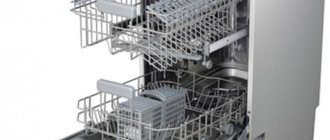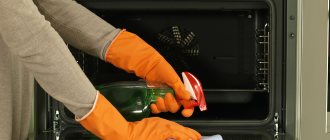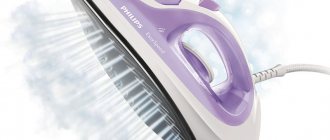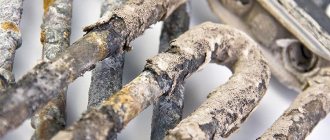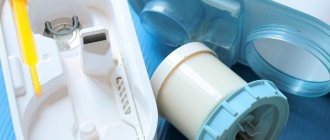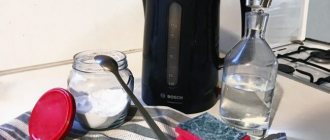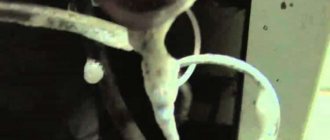One of the latest innovations among household products - a thermopot - certainly made a splash when it appeared on the market and eased the everyday worries of many housewives. But, like any other electrical appliance that comes into contact with water, it requires regular cleaning to remove limescale deposits that appear over time. How to clean a thermopot from scale at home? We have selected the most popular methods and popular tips with which you can easily cope with this trouble.
How to clean a thermopot from scale at home quickly and effectively - top 20 products
Having even a brand new device in use, you can observe how, after some time, white stains appear on its walls. This means that it’s time to clean the thermopot from scale. How and by what means can this be done at home?
Folk remedies
There are quite a few simple and effective ways to clean the device using folk remedies. Using the methods suggested below, you will effectively and completely safely remove all types of contaminants.
Vinegar
You can clean the thermopot from heavy scale using table vinegar. This is an effective remedy in combating limescale, in addition, acetic acid can cope with any, even the oldest deposits that may remain on the heating elements. To do this, mix the solution in a ratio of 2 liters of water to 100 milliliters of vinegar, pour it into the device and boil. Leave to cool completely and then rinse the device thoroughly.
Soda
A small deposit that has formed on the surface of the thermopot can be cleaned with soda. Dilute 2 dessert spoons of the product in 2 liters of water, pour the resulting solution into the container of the device and boil. After waiting for complete cooling, drain and thoroughly rinse the inner flask of all residues.
Lemon acid
If the plaque has acquired a dense sediment, you can clean the thermostat with citric acid. Since this is a fairly popular remedy, getting rid of scale will not be difficult. Add a tablespoon of crystalline substance to 1 liter of water and bring to a boil, drain the solution, removing the residue with a sponge. Rinse the container with clean water.
Soda + Citric acid
It works well to clean the thermopot with baking soda and citric acid. Fill the device with water and boil it, add 1 tablespoon of soda to the boiling water. After letting it brew, drain and boil again with a solution of citric acid. Using this method, you will get rid of not only scale, but also all foreign odors.
Soda
You shouldn't be surprised, but the drinks contain phosphoric acid, which will help remove lime deposits. Pour liquid into the flask of the device, and then bring to a boil. After the soda has cooled, drain it and rinse the device.
Apple peel
Apple peel will help remove scale from a thermopot at home; thanks to the fruit acids it contains, all contaminants are perfectly broken down. To process, pour the required amount of water, add the peel and boil. Once cooled, remove everything and rinse.
In this way, only small deposits can be washed off, so apple peelings are best used as preventive measures.
Ascorbic acid
Vitamin C, as it turns out, helps not only strengthen our body, but also perfectly cleanses scale. But keep in mind that its use is effective for minor stains and regular cleaning. To do this, dissolve 1 tablet of the drug in 1 liter of water, bring to a boil and leave for 30 minutes. Pour out all the contents and rinse thoroughly with water.
Salt
There are still quite a few ways to help us decide how to get rid of scale in a thermopot, and one of these ways is to use salt for these purposes. To clean the unit, pour 1 glass of water into the vessel, add another glass of finely crushed ice and 4 teaspoons of table salt. Stir the resulting mixture, and then walk along the walls with a sponge, removing dirt.
Coca Cola
It turned out that this drink perfectly removes plaque. How to clean a thermopot with Coca-Cola from scale? Simply pour it into the device, bring it to a boil, and then wash the flask thoroughly. When processing, do not close the lid under any circumstances, otherwise the carbonation may escape.
Cucumber pickle
Since cucumber marinade contains a small amount of acetic acid, some housewives have gotten used to using it to clean the unit. Pour brine into a container, boil and let sit for 30 minutes. Then rinse with running water to remove odor and dirt.
Potato peelings
The tubers contain ascorbic acid, although its percentage is not large, but as it turns out, it is sufficient to successfully use the peel to remove scale. To do this, you need to rinse it thoroughly and load it into the device’s container, add water and boil. As the solution cools, it will soften lime deposits.
Oat decoction
Perhaps one of the most ancient methods, which has come down to us since ancient times: pour 300-400 grams of cleanly washed grain with water and cook for an hour. Pour the strained liquid into a thermopot and set the boiling mode. After 1 hour, turn off the device and let the broth cool.
Tea mushroom
Another budget-friendly method for removing scale from a thermopot is to use vinegar, which produces kombucha. Pour the strong infusion into the flask and leave for 40 minutes, boil, and then wait for it to cool completely.
Citramon
The drug will help you get rid of plaque that is just beginning to form; it is also good as a preventative measure. Its dosage is calculated based on the volume of thermopot. On average, for a container of 3 liters, you need to prepare 2 packages of tablets, crush them into powder and add to the device, mixing with water. After boiling, drain and rinse the now cooled liquid.
succinic acid
In the same way, you can clean the thermopot from scale, taking the place of citramone, an amino acid that is widely sold in the pharmacy chain. This is an excellent tool for treating the device at home.
Household chemicals
If traditional methods do not work for you, you can try professional remedies, fortunately there are plenty of them in any store today.
Denk mit Entkaker
The formulation of this drug includes citric acid, the concentration of which allows you to remove even the most stubborn deposits without causing harm to the parts of the thermopot. Measure out 40-50 ml. Denk and add to 0.5 liters of water, boil the solution in the device. After cooling, wash with a sponge.
Top House Cleaner
Allows you to clean any type of dirt. Fill the flask of the unit with water up to the vertical mark, add 150 ml. substances and bring to a boil. Drain the cooled liquid and rinse.
Products TM Green Clean Professional
Perhaps one of the best series of cleaning products on our market will perfectly allow you to descale the thermopot at home, as well as disinfect it. Instructions for use are printed on the surface of each bottle.
Caustic or soda ash
But these substances require careful handling; they should be poured into containers with caution. Take 1 liter. water 3 tbsp. l. crystals, pour the solution into the flask, set the boiling mode, after heat treatment, let the liquid cool.
Formic acid
Formic acid can hardly be called harmless; its vapors are toxic and can cause burns. Therefore, if you still decide to use it, put on gloves and open the window in your apartment. For treatment, take the substance in a 1:1 ratio with water.
Cleaning the thermopot with special means
The easiest way to remove scale from a thermopot is to buy a special cleaning product. It is sold in the department with household chemicals.
The procedure itself does not take much time. Typically, this is a standard set of actions:
- Fill the device with water;
- Dilute the cleaning agent in it;
- Bring the solution in a thermopot to a boil;
- Leave this solution for a while;
- Wash the device with detergent.
On a note! Follow the instructions for use carefully. Aggressive substances, if left too long, can damage individual parts of the device.
How to prevent scale formation in a thermopot?
No matter how hard you try, you will not be able to avoid scale formation, but there are several recommendations that will help to significantly reduce the rate of its formation and extend the life of your appliance;
- Try to use filtered or bottled water;
- Clean the surface regularly;
- When removing plaque, do not scratch the inner surface of the flask;
- Change the water as often as possible.
After reading our article on how to descale a thermopot at home, you will certainly choose the most convenient option and preserve your unit for a long time.
Please rate how useful this article was to you! (No ratings yet)
Yandex recommends - the best articles on the site
You may also be interested in
- Top 20 products to descale the inside of your iron...
- Instructions: how to descale a kettle with soda?
- Instructions: how to descale a kettle with vinegar?
- Instructions: how to descale a kettle with citric acid?
- How a thermopot works: operating principle and instructions...
- Top 20 products to remove burnt marks from your iron...
- 12 simple tips on how to choose the right thermostat...
- Step-by-step instructions: how to properly clean...
- Step-by-step instructions: how to properly clean...
- Instructions: how to clean the powder tray in…
- What is better: a thermopot or a kettle? Compare by parameters
- Instructions: how to remove the smell of rotten meat, mold and...
Causes of scale
Tap water is not of good quality. It contains calcium and magnesium salts, so when boiled, carbon dioxide is formed. Solid sediment settles firmly inside the thermopot. Lime covers the walls, spiral and heating disk of the thermopot.
On a note! Using a cleaning filter does not guarantee reliable protection against scale. It is not able to remove all unnecessary microelements.
It is imperative to clean the thermopot in a timely manner. After all, even a small amount of whitish residue can lead to such troubles as:
- Increasing the heating time of water when boiling;
- High power consumption;
- Loud noise from the device during operation;
- Salty taste of water;
- Harm to the human genitourinary system and kidneys due to lime content.
Attention! If you ignore scale formation and maintenance rules, the thermopot may burn out!
Cleaning the thermopot with folk remedies
Many housewives fear that household chemicals can harm their health. Therefore, they use folk recipes with improvised means. Plus, they are always available.
Potato peelings
Wash fresh potato peelings thoroughly and place them in a thermopot. Add water and boil. For best effect, they can be left overnight. The scale will soften and in the morning its remains can be easily removed with a sponge.
Apple or pear peel
The peel of these fruits contains substances that help not only remove lime, but also darkening on the thermopot elements. Pour water over the cleaning and boil. The device will get rid of scale and return to its original color.
Other rust removal methods
You can also remove rusty deposits using non-standard solutions. It will be interesting to learn about some unique ways in which utensils are cleaned.
- Washing powder is poured onto a damp surface and left to act for 20 minutes. Now half a potato enters the battle and is thoroughly rubbed into this area. All that remains is to rinse the device, but this must be done with special diligence.
- The popular drink Coca-Cola can also help eliminate the threat of corrosion. You need to pour it into the kettle and leave it overnight. In the morning, the device is wiped with a sponge and soap and washed with water. If the inner coating of the kettle is white, then it is better to use a drink like Sprite or 7-UP - they have a minimal amount of dyes.
- Is there any brine left over from cucumbers or tomatoes? Feel free to pour it into the kettle. The whole secret is in the required consistency of citric acid and vinegar used for canning. The recipe is simple: add brine, pour it into the dishes, bring to a boil, cool, drain. Of course, an unpleasant specific odor will remain, which can be removed by thoroughly washing the dishes.
- Sour milk will also come in handy. It is enough to fill the kettle to one third of its volume with the drink, bring to a boil and leave for a short time to react.
- Another popular method is to use peelings from potatoes, pears and apples. It is usually used for an enamel or steel teapot - the contents are placed in a bowl, boiled and left for several hours. Afterwards, you need to drain the contents and boil again with clean water. This procedure is enough to completely wash out all the bad contents.
General recommendations
Regardless of which kettle you have in front of you - electric or metal for the stove - the tips for caring for it will be identical:
- Clean the device at least once a week so that you don’t have to scrape off too thick a layer of limescale;
- drain the remaining water from the kettle overnight, and pour a new portion in the morning;
- use only cleaning products labeled “for kitchen and food equipment”;
- clean the outer surface with soft, non-aggressive abrasives;
- Before performing hygiene measures, unplug the device (remove it from the stove) and let it cool.
Features of cleaning an enamel kettle
The enameled surface is cleaned of rusty deposits using soda, a solution of table vinegar or household chemicals.
Using vinegar solution
The method consists of the following step-by-step manipulations.
- In the evening, boil about 3/4 of the water in the kettle.
- Fill the remaining container with 9% vinegar. For greater effectiveness, you can add a tablespoon of regular salt to the solution.
- Leave the teapot with the vinegar solution overnight.
- Drain the liquid and rinse the kettle thoroughly.
- If there are any remaining rust stains, scrub the surface with a brush.
- Rinse the kettle thoroughly.
To get rid of the vinegar smell, boil clean water in the appliance and drain.
Using Baking Soda
Soda is gentler than acid and does a good job of cleaning enamel surfaces damaged by cracks and chips. This method is also suitable for cleaning aluminum kettles. The algorithm of actions is as follows.
- Prepare a soda solution based on the proportion of 1 tbsp/0.5 l.
- Pour the prepared liquid into the apparatus and boil.
- Pause and boil again.
- Drain the liquid, wipe the surface with a soft sponge and rinse thoroughly.
The amount of soda solution poured into the kettle depends on its capacity. It is important that the walls affected by rust are completely covered with the solution.
To avoid damaging the enamel, it is not recommended to apply soda to the walls with a sponge or brush.
Anti-rust liquid Cillit Bang
The range of household chemicals from the Cillit brand includes a large number of products. To clean the insides of the kettle from rusty deposits, it is recommended to choose a specialized product from the Cillit brand against plaque and rust. This product is a liquid packaged in plastic bottles with a capacity of 0.55 liters. The cost of one bottle is approximately 170 rubles. Suitable for removing rust from intact enamel surfaces (without chips or cracks).
The cleaning fluid is acid-based, so make sure to protect your hands with rubber gloves. Moisten a sponge with a few drops of the product and smear the inside of the kettle. Pause for no more than 5 minutes. Rinse thoroughly to remove the product. Wipe dry.
Cillit Bang for plaque and rust removal should not be used on aluminum or damaged enamel surfaces.
The appearance of rust in the kettle
The population who has access to high-quality water in all respects is incredibly lucky. Many people have to use hard water with a high content of various mineral salts and trace elements for drinking and cooking. If there is a lot of iron in the water, a coating of rust will certainly form on the walls of the pots and in the kettle.
Why should you delete
Just a few boils of water are enough for this rusty deposit to form on the inner wall of the kettle. In addition to the unpleasant appearance inside, there are other reasons why you need to clean the rust:
- A specific taste appears that does not allow you to enjoy the aroma of freshly brewed tea or coffee.
- In electrical appliances, deposits on the heating coil interfere with heating. The boiling time increases by an order of magnitude.
- Many housewives throw away a working kettle only because of brown rust inside.
What to use?
Both the internal and external surfaces of the heating device are subject to treatment. Inside, as a rule, only limescale accumulates, but on the outside the body is covered with dust, splashes and drops of grease , which also need to be removed.
How to wash the inside?
Dealing with scale inside the kettle is allowed only with means that are not hazardous to health. We are talking about components that are edible or used for cooking.
These are soda and citric acid, carbonated drinks and vinegar, brines and fruit infusions. Such folk remedies will definitely not harm your health - they are time-tested and safe.
But it is prohibited to wash the inside of the kettle with aggressive chemicals - you can easily get poisoned.
Mine outside
The chemical requirements for cleaning the exterior of the housing are not too stringent.
An excellent way to clean the outside of a stainless steel device is with regular toothpaste.
A small amount is squeezed onto a toothbrush and the contaminated areas are scrubbed locally. If you need to clean the entire body, the paste can be applied to the hard side of a dishwashing sponge and walked over the entire area.
Baking soda can easily replace toothpaste . Dip a cloth into the powder and wipe the kettle in a circular motion. This method is good for both metal and plastic units.
Activated carbon is another affordable and effective remedy. 10-15 tablets should be crushed into powder and applied to pre-moistened outer walls. Leave for about an hour and rinse with clean water.
Coca-Cola and other sodas
Contrary to popular belief, refreshing drinks remove scale not thanks to dissolved gas, but with the help of phosphoric acid, which is included in their composition. You can buy almost any soda containing this component:
- coca cola;
- Pepsi-Cola;
- "Sprite";
- "Fanta", etc.
We suggest you familiarize yourself with how and how to remove machine oil from clothes at home: from soap to caustic soda
They just need to be poured into a thermopot (1-2 liters) and brought to full volume with water. Additionally, you can add acetic or citric acid, then boil the solution and let it cool.
How to clean a burnt kettle
When heated, the burning layer releases toxic substances that are hazardous to health. In addition, the kettle does not have an aesthetic appearance. If your kettle burns out, then you just need to know how to clean it
Nowadays there is a very wide selection of cleaning products in stores. For example, "Sunklin". It is simple to use: apply to the surface and leave for a few minutes, then thoroughly wash the kettle. Always use a paste and a soft sponge to avoid leaving scratches on the surface. Of course, you can do without chemicals using folk remedies, but this process can be more labor-intensive.
You need to take a large saucepan that can fit the kettle. We prepare a special solution. For 10 liters of water, 100 grams of soda and 80 grams of silicate glue. These ingredients can be replaced with grated laundry soap. Immerse the kettle in the pan with the solution and bring to a boil. Let it cool. With a cooled solution, use a sponge to remove carbon deposits.
How can you clean the outside of the kettle? A thin layer of soot can be removed with damp salt. Or you can prepare a solution: 1 teaspoon of salt and 1 table. a spoonful of vinegar, which will help remove fumes from the kettle.
Activated carbon will help remove burning from an aluminum kettle. Moisten the surface of 10-15 tablets, crush the teapot, apply to problem areas. After 40-60 minutes, wipe off the burnt residue and rinse with water.
Removing rust, fumes and grease
Scale is not the only problem that can happen to your kettle. Rust, congealed fat, and burnt areas often appear on any kitchen surface, and dishes are no exception. And all these contaminants act to the detriment of helping each other: scale destroys metal surfaces, leading to rust and burning, fumes and rust attract fat and “fix” new scale. Therefore, if you really clean the kettle, do it completely, ridding it of all the troubles at once.
Rust should be cleaned as soon as you notice signs of it. Sprinkle some laundry detergent or cleaning powder onto the rust stain and let sit for 20 minutes. Then wipe the problem area with half a potato. After this, rinse the kettle thoroughly in running water.
Clean rust from metal kettle in a timely manner
In addition to the fact that the burning gives the dishes an unaesthetic appearance, its layer releases toxic substances when heated. Therefore, a burnt kettle must be cleaned immediately.
- Use a household cleaner, this is the easiest option. Apply it to the surface and leave for 15-20 minutes, then rinse the kettle in water.
- Take a large saucepan that will fit the entire kettle. Prepare a solution: 10 liters of water, 100 grams of soda, 80 grams of silicate glue (it can be replaced with grated laundry soap). Bring the pan with the solution and the kettle immersed in it to a boil, let cool. After this, clean the surface from carbon deposits with a sponge.
- A thin layer of external soot can be easily removed with wet salt or solution: 1 tsp. salt per 1 tbsp. vinegar.
- Activated carbon will cope with the burning of an aluminum kettle. Crush 10-15 tablets and apply evenly to a dampened surface. After an hour, wipe thoroughly and rinse with water.
If you do not want to use chemicals to remove grease from the kettle, then use baking soda, wiping problem areas with it. In case of an advanced stage, the following solution will help you:
- 1 tbsp. vinegar;
- 1 tsp salt;
- 1 tsp soda
Rub it over the dried fat and rinse.

